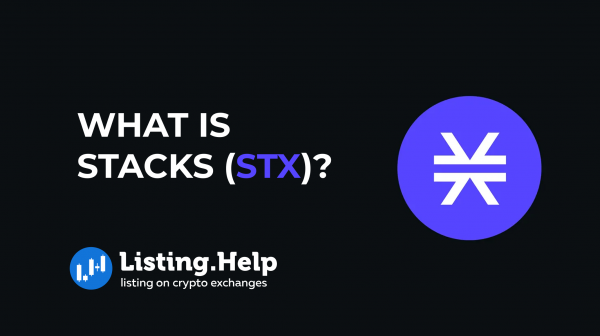How Can You Make Passive Income with Cryptocurrency? TOP 9 Proven Ways
 November 16, 2023
November 16, 2023 Updated: January 27 2025, 07:24
Updated: January 27 2025, 07:24
LEAVE A REQUEST
Launching your own token project? Our experts are ready to help with listing on exchanges, market making, marketing and other solutions
SUBMIT APPLICATIONWhat Is Crypto Passive Income?
The concept of passive income in the realm of cryptocurrency involves acquiring a consistent income from your crypto assets without the need for constant involvement in activities like frequent trading or buying and selling. Essentially, it’s about earning returns even when you’re not actively managing your investments.
In the world of conventional finance, passive income streams can be created through means like dividends from stocks, income from rental properties, or the interest accrued from bonds. Similarly, in the cryptocurrency sector, you can earn passive income through different methods. These include staking your crypto, engaging in yield farming, or participating in lending and borrowing schemes. These methods are accessible through a variety of crypto exchange platforms or through decentralized finance (DeFi) protocols.
This guide is designed to demystify the concept of passive income and delve into 9 practical strategies that you can employ to begin generating passive income in the world of cryptocurrency.
9 Crypto Strategies for Passive Earnings
Crypto Mining
In the realm of cryptocurrency, mining refers to the use of advanced computer equipment to solve intricate mathematical puzzles and verify transactions on a Proof of Work (PoW) blockchain. Miners, by contributing their computational resources, are compensated with new coins or transaction fees as rewards.
However, the reality of mining as a source of passive income in crypto involves considerable initial expenses and groundwork. This high barrier to entry has resulted in smaller investors being overshadowed by larger mining operations.
Staking in Cryptocurrency
Staking in crypto involves individuals committing their coins to support a Proof of Stake (PoS) network’s consensus process. This commitment helps secure the network and confirm transactions. As a reward for their involvement, stakers receive additional coins. Staking generally entails locking up your cryptocurrency for a specified duration, with the rewards depending on the quantity staked and the length of time you participate.
To stake, one can set up a specialized staking wallet and maintain their coins in it. Sometimes, this process also involves contributing or delegating funds to a staking pool. Certain exchanges can manage staking on your behalf, although this introduces an additional layer of risk since it necessitates keeping your funds on the staking exchange.
Airdrops
A favored method for passively acquiring cryptocurrencies is through participation in airdrops. These airdrops are usually conducted by cryptocurrency projects or sometimes by crypto exchanges themselves. In essence, this involves the distribution of free cryptocurrencies to users who meet specific criteria. Airdrops are commonly utilized by emerging crypto projects aiming to disperse their digital assets. Frequently, these initiatives are backed by larger projects or exchanges.
Earning Through Crypto Nodes
An increasingly notable approach to earning income in the cryptocurrency space is through operating crypto nodes. Nodes are integral components of a blockchain network, responsible for storing, spreading, and preserving the blockchain data. By running a node, individuals contribute to the network’s robustness and functionality. In return for their efforts, node operators are often rewarded with transaction fees or other incentives.
This process requires a certain level of technical knowledge and an initial setup, including hardware and sometimes staking a certain amount of cryptocurrency. It’s a method that appeals to those who have a deeper understanding of blockchain technology and are willing to invest in the necessary infrastructure.
Yield Farming in Cryptocurrency
In the context of cryptocurrency, yield farming is the practice of lending or committing your digital assets to different DeFi (Decentralized Finance) protocols for the purpose of earning rewards. These rewards might come in several forms, such as extra tokens, fees accrued through the protocol’s operations, or other types of incentives.
It’s important to recognize that yield farming can present a spectrum of risk and potential reward. The actual returns are subject to change based on the prevailing market conditions and the specific DeFi protocols in which one chooses to engage. Yield farming strategies can become complex, often involving the integration of diverse protocol offerings to optimize the potential for returns.
Blockchain-Based Content Creation Platforms
The rise of blockchain technology has given birth to numerous novel content platforms. These platforms enable content creators to earn money in unique ways while maintaining control over their data and avoiding intrusive advertising.
Creators on these platforms retain ownership of their work and have various avenues to monetize their content. Although getting started may require considerable effort, these platforms can become a reliable source of income, especially once creators have established a substantial portfolio of content. An example is blockchain-based esports streaming platforms, where both streamers and viewers can earn tokens native to the platform.
DEX Liquidity Provision
Decentralized exchanges (DEXs) enable users to trade cryptocurrencies directly with one another, bypassing traditional intermediaries. By contributing liquidity to these DEXs, you have the opportunity to earn a portion of the trading fees the platform accrues.
This process involves depositing pairs of tokens into liquidity pools, which then facilitate trading activities for other users. The income you derive from this liquidity provision hinges on various factors, including the level of trading activity on the platform and the specific revenue-sharing model of the platform.
Affiliate Programs in Crypto
Certain cryptocurrency companies offer incentives to their community members for attracting new users to their platforms. This can involve the use of affiliate links, referral systems, or offering discounts to newcomers who sign up through these avenues.
For those with a significant social media presence, affiliate programs offer a potential avenue for additional income. However, it’s crucial to thoroughly vet these services to ensure you’re not endorsing subpar projects that could negatively impact your reputation among your network.
Crypto Games
Continuing our exploration of earning passive income in crypto, we come to one of the more enjoyable methods: playing crypto games. Many of these games today are built on the Play-To-Earn (P2E) model, which allows players to earn cryptocurrency as they play. The specific terms of earning vary widely from one game to another.
In some Player-vs-Player (PvP) games, players can earn rewards by winning matches against other players. Other games might involve mining or gathering valuable in-game resources that can be sold for a profit.
Additionally, certain games offer the chance to win Non-Fungible Tokens (NFTs) which can then be sold on third-party marketplaces for a profit. While the earning mechanisms differ across various P2E games, the overarching concept of earning income through gaming represents a significant shift in the gaming industry.
Risks in Earning Passive Income with Cryptocurrency
Understanding and managing risks is crucial when earning passive income through cryptocurrency. Here are key risks to consider:
- Market Volatility: Cryptocurrencies are notorious for their rapid and significant price swings. This volatility means the value of your investments, and consequently your passive income, can increase or decrease dramatically in a short period, potentially leading to losses.
- Platform Risk: Passive income in crypto often depends on third-party platforms, such as exchanges or decentralized finance protocols. These platforms can face various challenges, like technical glitches, security breaches, or operational failures, risking the loss or theft of your assets. Opting for established and reputable platforms can lessen these risks, but vigilance is always necessary.
- Research and Evaluation: Before engaging with a platform, it’s crucial to conduct thorough research. Assess their credibility, transparency, and track record. Some platforms might have design flaws, lack a sustainable business model, or, in the worst cases, be outright scams, posing significant risks to your funds.
- Security Concerns: The digital and financially lucrative nature of the crypto industry makes it an attractive target for cyberattacks. Hackers may target exchanges, wallets, or other platforms where you store your funds. To safeguard your assets, employ strong security measures, like using hardware wallets and engaging with platforms known for stringent security practices.
- Inflation and Token Devaluation: Cryptocurrencies can be subject to inflation or devaluation. Factors like the issuance of new coins, changes in monetary policies, or the release of tokens can devalue your assets, affecting your passive income.
- Liquidity Risk: Certain passive income methods in crypto, like staking or liquidity provision, require locking up your assets for a set period. This creates a liquidity risk, as you might not be able to access or sell your assets quickly in response to market shifts or if you need urgent liquidity.
Conclusion
Getting into crypto for passive income is an exciting idea, but it’s not all smooth sailing. You need to be really careful and know what risks you’re taking. Also, get ready for some highs and lows along the way.
Keep in mind that making money passively through crypto isn’t a sure thing. It takes good planning, being smart about risks, and really getting to know how the crypto world changes. As you start this journey, always make choices that fit with how much risk you’re okay with and what you want out of your investment.

Also, don’t forget to check out our blog at Listing.Help for more tips and news about this stuff. You’ll find lots of helpful info and advice there to help you out with your crypto investments.







 December 18, 2025
December 18, 2025 








